Leadership is the backbone of any successful organization. But as many businesses have learned, leaders aren’t always brought in from the outside. Sometimes, the most impactful leaders have been with a company for years, growing, learning, and evolving right under our noses. Identifying these gems and preparing them for C-Level positions is a crucial process known as internal scouting. Let’s unpack some best practices for spotting and nurturing these in-house talents.
Implement a 360-Degree Feedback System
Understanding how an employee functions within a team can provide deep insights. A 360-degree feedback system, where colleagues, supervisors, and even subordinates provide input, can reveal leadership qualities that might not be evident in day-to-day tasks.
Encourage Cross-Functional Projects
By allowing employees to work on projects outside their usual purview, you not only foster skills development but also get a chance to see who takes the initiative, showcases versatility, and thrives in unfamiliar territory—all signs of a budding leader.
Monitor Problem-Solving Skills
Leaders are often faced with complex problems that require innovative solutions. Track how your internal candidates approach challenges. Those who demonstrate a knack for strategic thinking and can navigate challenges with grace are often prime leadership material.
Invest in Continuous Learning and Training
Organizations that prioritize continuous learning create environments where potential leaders can grow. By offering workshops, courses, or certifications, you can gauge who is committed to their personal and professional growth.
Seek Out Effective Communicators
Leaders need to articulate their visions clearly and inspire teams. Pay attention to those employees who communicate effectively, both in writing and verbally, and who show an ability to connect with a diverse range of colleagues.
Recognize Emotional Intelligence
While hard skills are crucial, emotional intelligence—comprising empathy, self-awareness, and interpersonal skills—plays a significant role in leadership. Keep an eye out for those who handle interpersonal relationships judiciously and empathetically.
Set Up Mentorship Programs
Pairing potential leaders with existing C-Level executives can provide them with invaluable insights and exposure. Moreover, mentors can provide feedback on how their mentees are progressing and which areas might need further development.
Use Succession Planning Tools
Leverage modern HR tools designed for succession planning. These tools can track employee performance, growth trajectories, and readiness for leadership roles, making the internal scouting process more systematic and data-driven.
Conclusion: The Power of Internal Scouting
While the allure of sourcing fresh external talent can be tempting, there’s undeniable value in recognizing and nurturing potential leaders already within your organization. These individuals already understand the company culture, its values, and its vision.
At RMA, we advocate for a balanced approach—valuing both the promise of new perspectives from external candidates and the proven dedication and growth potential of internal talent. After all, the right leader, whether from inside or outside the organization, can be a game-changer.












